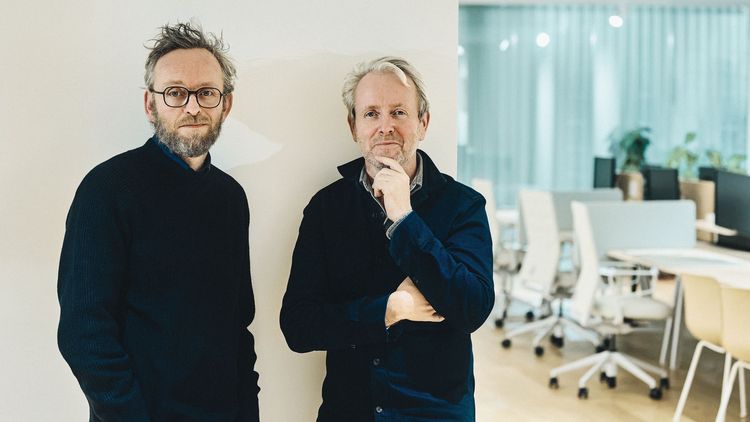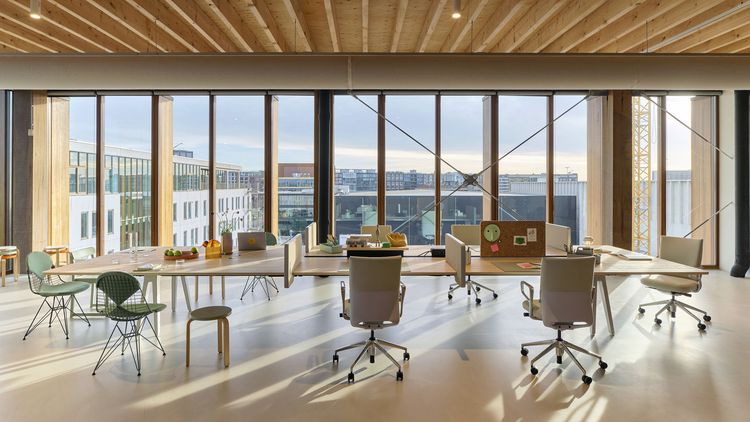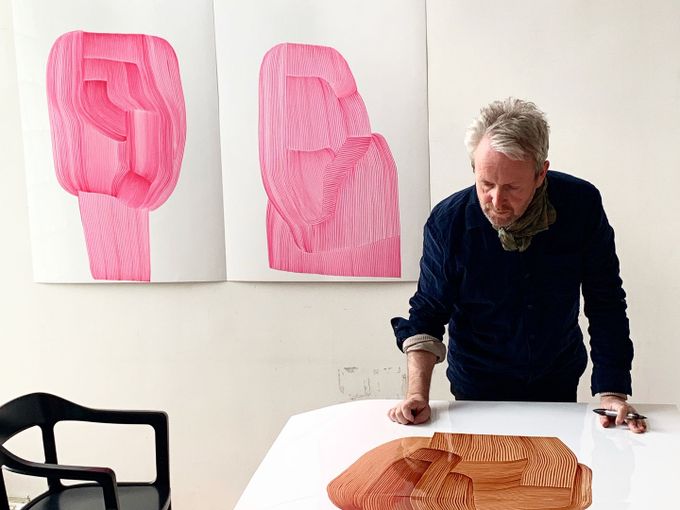ProductsChairsLounge chairsSofasOffice chairsChaises longuesStools & benchesSculpturesConference chairsAirport seatingStorage spaceMicro architectureDining tablesCafé tablesCoffee & side tablesDesksOffice furniture systemsConference systemsLightingClocksDecorative objectsCoat racks & wall shelvesTrays & vesselsNewBestsellerQuickly availableColour & materialAlexander Girard Antonio CitterioBarber OsgerbyCharles & Ray Eames George NelsonHella JongeriusIsamu NoguchiLounge chair finderOffice chair finderGift finderCare & repairSpare partsCare productsManufacturer warrantyVitra Circle StoresVitra Circle for Contract (Business clients)Lounge Chair & OttomanHang it allInspirationsLiving roomDining roomHome OfficeChildren's roomOutdoorHome StoriesAugmented RealityColours & materialsHome SelectionWorkspaceFocusMeetingWorkshopClub OfficeCitizen OfficeStudio OfficeDynamic SpacesHospitalityAirportsEducationCo-WorkingHealthcareOur ClientsDestination WorkplaceA case for classicsOffice chairsDancing OfficeHome StoriesThe Home Selection fabrics from Kvadrat and DedarAugmented Reality - bring Vitra products into your homeSchool of Design: Showcase work and knowledgeA case for classicsColour & materialAn open house An office landscape - without walls or partitionsHigh comfort of low energyA leading space for a leading art collegeServicesCare & repairSpare partsCare productsManufacturer warrantyFAQ and contactInstructionsConsulting & Planning StudioVitra Circle StoresVitra Circle for Contract (Business clients)Consulting & planning in the VitraHausInstructionsOutdoor care instructionsRepair, maintenance, overhaul at the Vitra Circle Store Campus ProfessionalsCAD dataProduct factsheetsCertificatesSustainability reportInstructionsEcology informationpConPlanning examplesColour & Material LibraryCertificates and standardsHome SelectionTo the dealer loginOur ClientsMyntDestination Workplace: Visit our clients and partnersAnagram SofaMikadoTyde 2 on castorsACXDancing OfficeOffice chairsDancing Wall mobile collaborationMagazineStoriesConversationsExhibitionsDesignerProject VitraA Capsule in TimeSeeing the forest for the treesRefining a classicMynt is a lifetime achievement to meA desk like a typefaceV-FoamSculptural IconsGames bring people together – just like good officesLet there be light!Social SeatingJust Do It!EVER GREENWhy the Eames La Fonda Chair was designedWhen a Sofa is more than just a Sofa: Anagram100% virgin wool – 100% recyclableAn archive is like a time capsuleVitraHaus Loft - A conversation with Sabine MarcelisA 1000 m2 piece of furnitureFrom a toy to an objectThe Eames Collection at the Vitra Design MuseumAbout the partnership between Eames and VitraVitra CampusExhibitionsGuided tours & workshopsFood and drinkShoppingActivities for familiesArchitectureYour eventConsulting & planning in the VitraHausPlan your visitVitra Campus appCampus EventsNewsVitraHausVitra Design MuseumVitra SchaudepotVitra Circle Store CampusOudolf GartenAbout VitraSustainabilityJobs & CareersDesign processThe Original is by VitraHistory - Project Vitra
Living an Office
Interview with Erwan and Ronan Bouroullec

What does ‘living an office’ actually mean? This was the question Ronan and Erwan Bouroullec posed themselves in the early 2000s, while rethinking the office landscape for Vitra. Their queries led them to develop a collection of office furniture pieces that count among the most significant design inventions of the last two decades for the workspace. Designs include Alcove, a high-backed sofa that creates a more intimate meeting space, and Workbays, a modular system for office space configuration. There was an office chair, as well as Joyn and Tyde as well as the Abalon Sofa. The backbone of their office space concept, Joyn is a large table-cum-platform used for communication and teamwork. Or, as the brothers like to say, Joyn is ‘just‘ a large table.
Erwan Bouroullec: Remember images of the old days, when everything happened around one large wooden table, which was the heart of a farmhouse? At that table, someone was sitting and reading the newspaper, while someone else in front of him was peeling potatoes, and a third person at the other end was mending his watch next another person doing the monthly accounting. Kids were playing cards. Then, at lunch, everyone sat together and chatted. Quickly afterwards the table was cleaned. Empty again and people carried on with their doings. That was everyday life in our grandparents’ kitchen.
Designed as a simple, custom-sized table with a large, bare top, Joyn stands out for its ‘nothingness’. In contrast to the standard office desk with all the bells and whistles, Joyn is just a workbench, an empty platform without a predefined layout that centralises all activity around its homogeneous surface. Flexibility is provided with the help of accessories such as screens and containers, which can be attached and rearranged according to different and changing work situations. Each person arranges the space according to his or her individual needs at the moment.
So, rather than asking “What happens when an average of fifteen people spend their entire workday together in one space?” you started questioning how people live together, and how they share that space.
EB: Yes. We were looking for a communal table for people to come together, be next to each other, without necessarily working together all the time. The table is not for a certain kind of person, but for everyone. We tried to free the table as much as possible of specific tasks or calcified hierarchies. We looked for the opposite of a table that denotes status. We thought of a table that is able to encompass all the different roles and necessities of an office. After all, convivial life in the office is a big part of our everyday.Designed as a simple, custom-sized table with a large, bare top, Joyn stands out for its ‘nothingness’. In contrast to the standard office desk with all the bells and whistles, Joyn is just a workbench, an empty platform without a predefined layout that centralises all activity around its homogeneous surface. Flexibility is provided with the help of accessories such as screens and containers, which can be attached and rearranged according to different and changing work situations. Each person arranges the space according to his or her individual needs at the moment.


Were there any historical examples that you looked at?
EB: Not really – except the Action Office 2 by Robert Propst and George Nelson from 1968. The system was created from the user’s point of view. It allowed not only for productive work but also for a degree of privacy. That was an important element of office life that we learned about: there is the public space, and then there is also a need for private space. The private sphere can be created through a spatial retreat, like with the Alcove sofa. Privacy can also be created with flexible accessories that frame one’s space on the shared table.In the early 2000s, you hadn’t yet turned thirty and Rolf Fehlbaum, today Chairman Emeritus of Vitra, gave you carte blanche to rethink the office landscape.
EB: It was an incredible opportunity. Actually, Rolf told us to take advantage of our young age: “You are young and have no experience. Take advantage of it! Don’t imagine what people need. You are not going to understand them. You’ll only end up mimicking them. Do something that you need yourself. Hopefully, your own landscape will be have a more powerful universal value.” And it was!What made Joyn and the landscape you envisioned so powerful?
EB: We were addressing issues that were relevant in the 1960s, as they were in the 2000s, as they are today. But we were doing it by giving the employees the furniture to choose where and how to work. I like to think, we gave them back some freedom. Designers shouldn’t impose ways of work on anyone. We have to remember that a designed object has great influence on a space. But, not only on the space. An object also triggers change in how we use the space, and subsequently how we work. Good office design can encourage good work. Bad design can be disastrous for the people and the business.In one drawing after the next, the communal table slowly emerged. A table that provided the possibility for individual work, as much as for teamwork. You reimagined the classical office desk as a flexible platform, meant to be shared.
EB: We were designing right at the time when desktop computers and stacks of paper were making way for the laptop. Individual cubicles and sitting machines were replaced by more flexible solutions. The ergonomy of design gave way to the ergonomy of space. We wanted people to use the table in many different ways. We wanted them to move around the table and the office. Back then, we hadn’t even grasped the additional degree of liberation the mobile phone would bring.
In fact, the majority of people pace around, while speaking on the phone. Studies have shown that this helps with concentration and clear-headedness, as emotions are channeled into movement. So, getting back to the office: The increase of freedom and flexibility asks for great rethinking on the part of companies, too. It demands trust in people.
EB: Our office landscape invites the user to take charge, without obliging him or her to follow a written manual of predefined rules and behaviors. This way of working asks people to be more responsible of their own schedules and tasks. They are independent and can take autonomous decisions. This asks, in turn, for great trust on the part of companies. But the rewards are self-evident, especially when you see how people use the office design to work better, both individually and together.Now, almost 20 years later, Joyn 2 has arrived – along with a thorough ecologically-minded update. New materials such as cork, recycled leather and recycled plastic have replaced the original ones.
EB: Actually, Joyn is exactly what it used to be. But after twenty years of living with Joyn, our experience allowed us to improve the production of the table. We rethought its materials. We reconsidered it size. There are fewer legs; there is better cable management. We made it easier to assemble and disassemble. Joyn has always been solution-based, as it adapts to a space and client. We rendered the entire table system easier to understand and handle, ultimately providing better solutions for each context.Twenty years ago, Joyn was visionary. Today…
EB: … it has matured. One of the best parts of Joyn is that it continues to be undefined. The table does not give directions, or make demands. You can’t tell if it is for a manager or a secretary. It is not exclusive to executives nor to large group meetings. It is not even only specific to the office, but exists in schools, libraries and laboratories. It could be used in a bank as well as in an architectural office. It is just one vast, infinite landscape, where creative things take place. So, this anniversary of Joyn is not a reedition of the table. Far from it. Joyn continues to reflect its times.
Publication Date: 5.6.2023
Author: Anniina Koivu
Images: © Vitra


